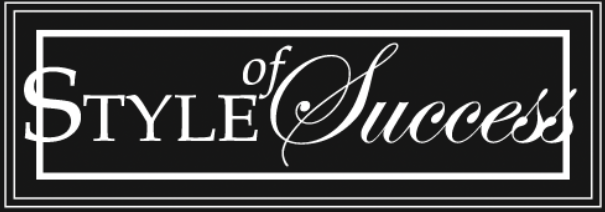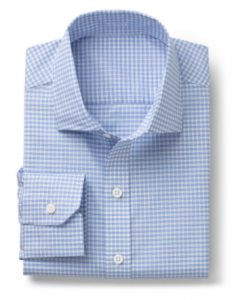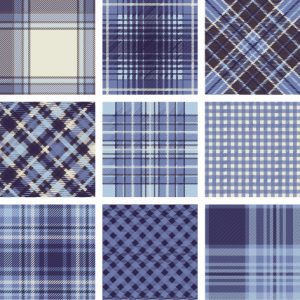
Heads up all you Brooks Brothers blue and white shirt guys
These two classic solid color shirts are a daily uniform to many. Easy – no mistakes, and worry free.
They also can be perceived by the viewer as uninspired and maybe boring. Solid-only dressing in the workplace can subtly suggest that you have fallen “into a rut” or that you are afraid to draw attention to yourself.
Adding inserting patterns into your wardrobe is an excellent way to add visual energy that reflects the perception others have of you – and you can do so without taking the RISK that adding a new color AND pattern could possibly create.
As an example in the collage picture above, some patterns are strong, but the colors are all n the blue or ivory range. These are also easy to incorporate as a tie, pocket square or shirt if you’re in a more casual setting. All will match your navy slacks or suit or chinos and jeans very nicely.
Pattern can make you look easier to work with
There is another reason to consider pattern, especially if you are an older manager in a younger office setting. Incorporating checks and plaids to your wardrobe suggests a little less “uptight” or formal feel. A guy wearing these patterns could be seen as more down-to-earth, easy-going and approachable.
As a sartorial aside, I am asked the difference between a plaid and a check – basically the answer is the complexity of the pattern:
Check, checkered or checked fabrics can be identified by solid squares.
This is the close-up of a checked suit/sport coat. Click here to see it made up.
The pattern plaid (or tartan in England) are a series of horizontal and vertical lines forming squares. More complex, usually considered more refined.

Click to see the pattern zoomed:
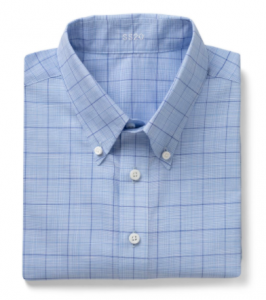
Here is a J.Hilburn business shirt in a Glen Plaid.
Here is a Prince of Wales plaid in the link also called a Glen Plaid.
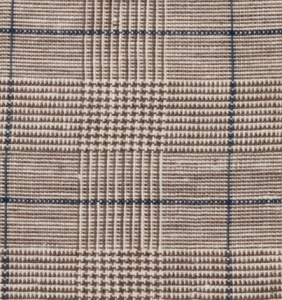
I love the Prince of Wales plaid story – here links to a detailed article from Lanieri Italia on the history, creation and modern day used of this classic fabric.
For those looking for a quick primer, this is what I think is important for you to know:
- Add ONE element of pattern to every outfit you wear.
- If you mix linear patterns (checks and plaids) with round patterns (paisley and dots) it can come across as very bold (too much?). If your style is more subtle, stick to one at a time.
- Plaids are more refined and finer patterns can be very elegant.
- Checks are more casual – not in the lumberjack manner, or picnic tablecloth – but perfect for business casual looks.
- The bigger the pattern, the bolder and more casual the look
- Incorporating a 3rd color (blue + white = 2, blue + white + pink = 3 ) becomes more casual.
Have fun wearing plaids and checks to work – start with more subtle patterns and enjoy looking updated and a little more lighthearted!
Ann Lindsay is Style of Success
I work to make you look effortlessly confident.
Image Consulting — Personal Styling
Concierge Shopping — J.Hilburn Menswear Stylist
I bring confidence, organization, efficiency to your life.
